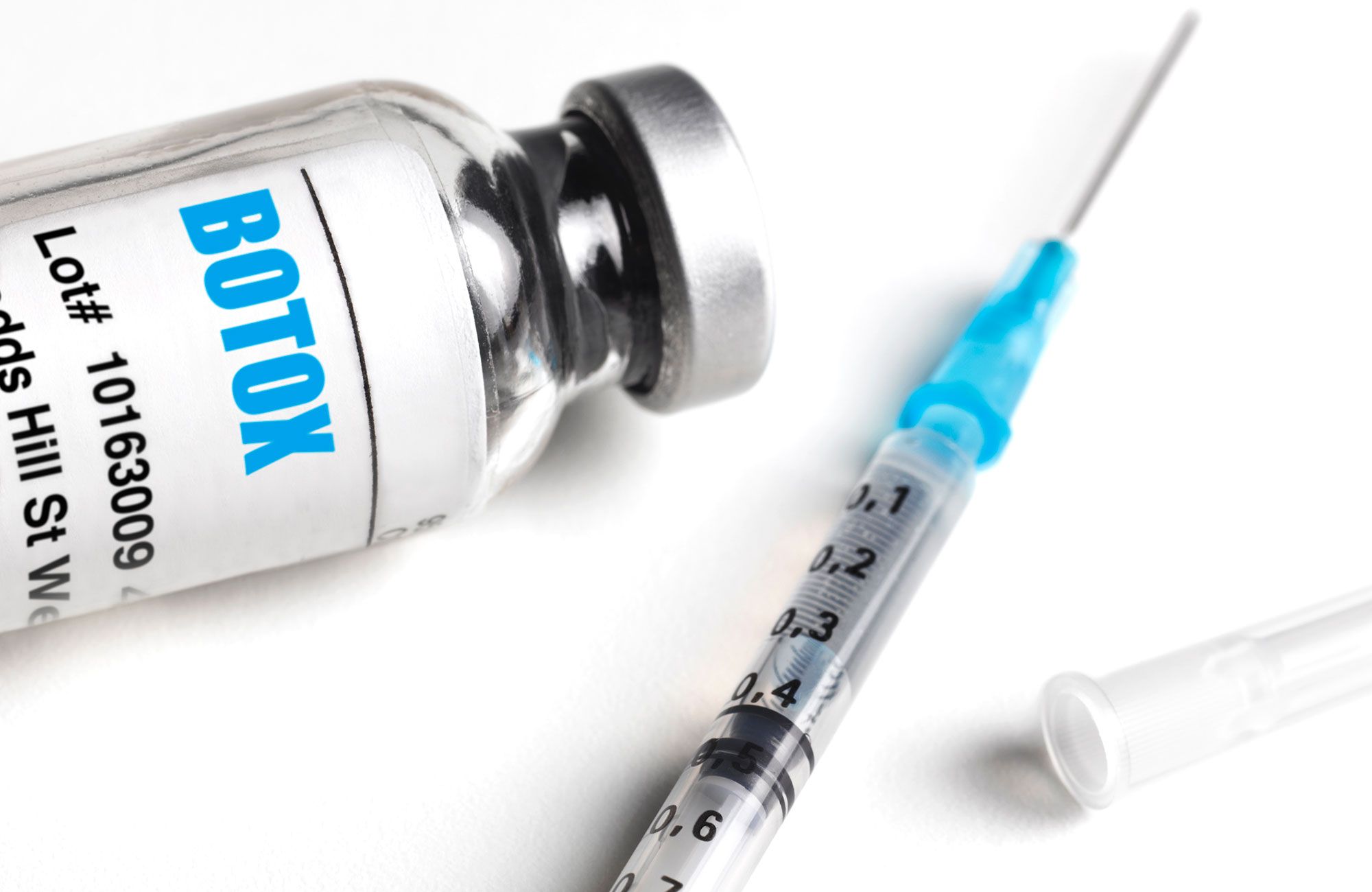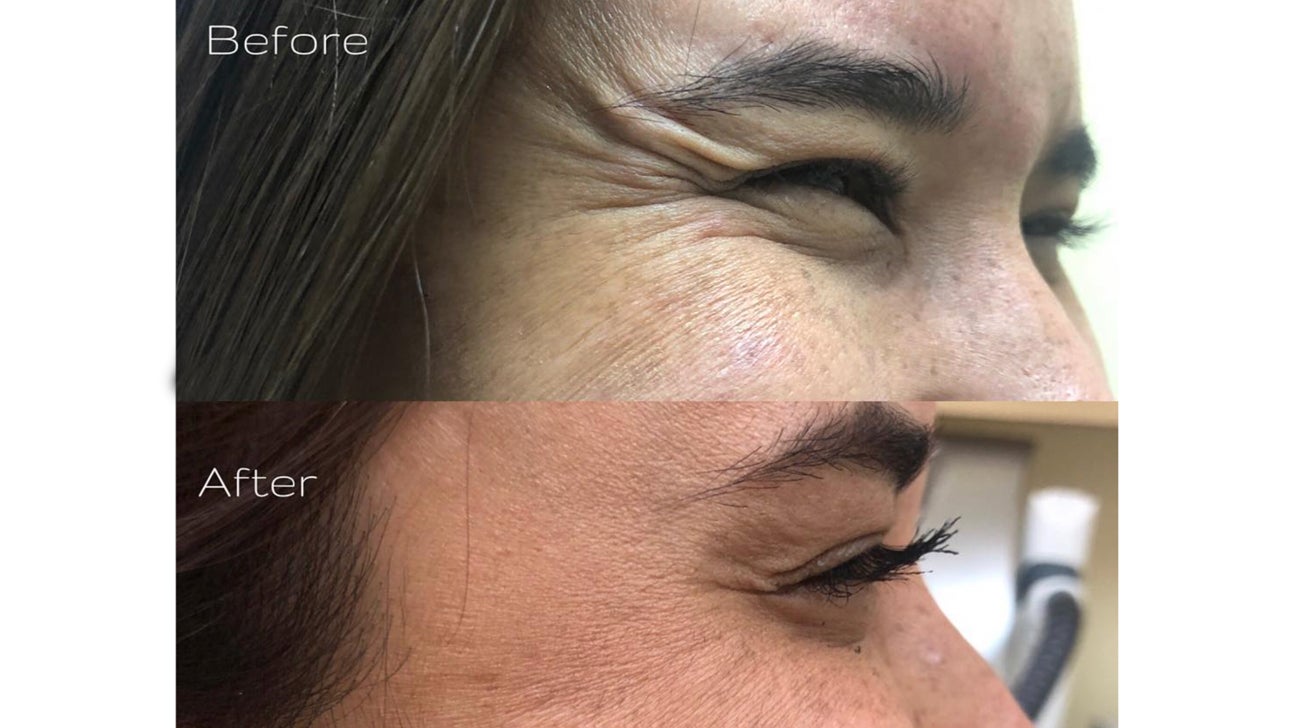Botox is a wrinkle and facial crease treatment that doctors have been using for years. Botox is a brand name for a toxin produced by the Clostridium botulinum bacteria. Other brands, such as Dysport and Xeomin, are available. Because it was the first injectable botulinum toxin, Botox is the most commonly used term.
Botox is most commonly used by doctors to minimize the look of wrinkles on the face. Botox injections, on the other hand, can help with a variety of diseases, including:

- Excessive sweating in the underarms (hyperhidrosis)
- Cervical dystonia ,a neurological condition that produces severe muscle spasms in the neck and shoulders.
- When You can’t stop yourself from blinking (blepharospasm)
- Eyes that are pointing in various directions (strabismus)
- Migraine attacks on a regular basis
- Bladder overactivity
1) How does Botox work?

Botox injections operate by weakening or paralyzing muscles, as well as blocking nerves. Depending on what you’re treating, the effects can last anywhere from three to twelve months. Pain, swelling, or bruising at the injection site are the most typical side effects. You may also experience flu-like symptoms, as well as a headache and an upset stomach. Injections in the face can result in drooping eyelids for a short time. If you’re pregnant or breastfeeding, you shouldn’t use Botox.
2) Procedure
- Before the procedure
The operation is usually painless for the majority of people. However, if your palms or soles are being treated for excessive sweating, you may wish to have your skin numbed beforehand. Your doctor may use a variety of techniques to numb the area, including topical anesthetic, ice, and vibration anesthesia, which relies on massage to relieve pain.
- During the procedure
In most cases, Botox injections are administered in a doctor’s office. Your doctor injects tiny amounts of botulinum toxin into your skin or muscles with a fine needle. The number of injections required is determined by a variety of parameters, including the size of the area to be treated.
Getting Botox takes only a few minutes. You won’t need anesthesia. The provider uses a small needle to inject Botox into specific muscles with only minor discomfort.
- After the procedure
For the next 24 hours, do not rub or massage the treated areas. This could help prevent the poison from spreading to other parts of the body. Following the surgery, you can resume your daily activities.
Also Read : Calcium and it’s Importance
3) Side effects of Botox

You may have some temporary side effects after a Botox injection. These could include:
- Bruising. This is the most common side effect and will go away.
- Headaches. Typically, these are rare and end in 24 to 48 hours.
- Eyelid drooping. This happens with only a small percentage of people and usually goes away within 3 weeks. It usually happens when the Botox moves around, so don’t rub the treated area.
- Crooked smile or drooling
- Eye dryness or severe tearing
- Mild pain or swelling around the injection site
- Flu-like symptoms or a general unwell feeling
- Upset stomach
- Numbness
- Weakness in nearby muscles
4) Is Botox safe?
Although botulinum toxin can be fatal in large concentrations, lower doses, such as those used in Botox injections, are deemed safe.Between 1989 and 2003, only 36 reports of adverse effects connected with cosmetic use were reported to the US Food and Drug Administration (FDA). Thirteen of these cases may have been caused by an underlying ailment rather than the medicine.
Given this, some experts believe cosmetic Botox injections pose a lower risk than therapeutic Botox injections because the doses are typically significantly lower.
Adverse effects were more likely to be recorded with therapeutic use, according to Trusted Source.
A study in 2021 concluded that some people given Botox injections experienced:
- superficial reddening of the skin
- swelling
- drooping eyelid or brow
- pain in the injected area
- other skin discolorations
Majority of these side effects were very small and temporary
Botox is considered safe overall
You should always go to a board-certified dermatologist or plastic surgeon for Botox injections. You’re more likely to experience adverse side effects if your injections aren’t prepared according to FDA standards or injected by an inexperienced doctor.
5) Side effects to watch
Although Botox injections are relatively safe, minor side effects are possible. These include:
- pain, swelling, or bruising at the injection site
- headache
- fever
- chills
Some side effects are tied to the area of injection. For example, if you receive injections in the eye area, you may experience:
- drooping eyelids
- uneven eyebrows
- dry eyes
- excessive tearing
Near mouth

Drooling or a “crooked” smile may arise from injections around the mouth.The majority of adverse effects are transitory and should subside within a few days.However, drooping eyelids, drooling, and asymmetry are all caused by the toxin’s unintended effects on muscles surrounding the drug’s target locations, and these adverse effects might take weeks to heal as the poison wears off.
Long term effects from Botox
Since Botox injections only have a brief impact, most people require many injections over time. However, there is a scarcity of long-term efficacy and safety data.According to a 2015 study,participants who received Botox injections every six months to assist address bladder issues were studied by Trusted Source. The observation period was limited to two years by the researchers.They eventually came to the conclusion that the danger of negative effects did not grow over time. People who had multiple injections showed higher long-term therapeutic outcomes.
However, according to the findings of a 2015 assessment, harmful effects may develop only after the tenth or eleventh injection.
These included:
- difficulty swallowing
- drooping eyelid
- neck weakness
- nausea
- vomiting
- blurred vision
- general or marked weakness
- difficulty chewing
- hoarseness
- edema
- difficulty speaking
- heart palpitations
Things to remember while taking Botox
It’s critical to work with a registered medical provider if you’re considering Botox treatments.
Working with someone who isn’t licenced may be less expensive, but it increases your chance of issues. Keep in mind that the toxin lasts 3 to 6 months, so you’ll probably require multiple doses.
Side effects are possible with any procedure. Consult your doctor about what to expect during the injection procedure and the recovery time that follows. They’ll be able to answer any questions you have and go over your specific advantages and hazards.
Further Reading :




